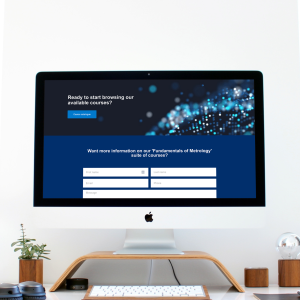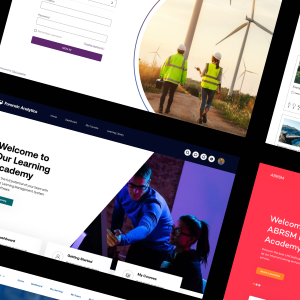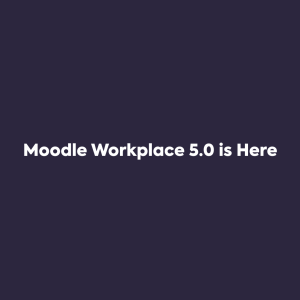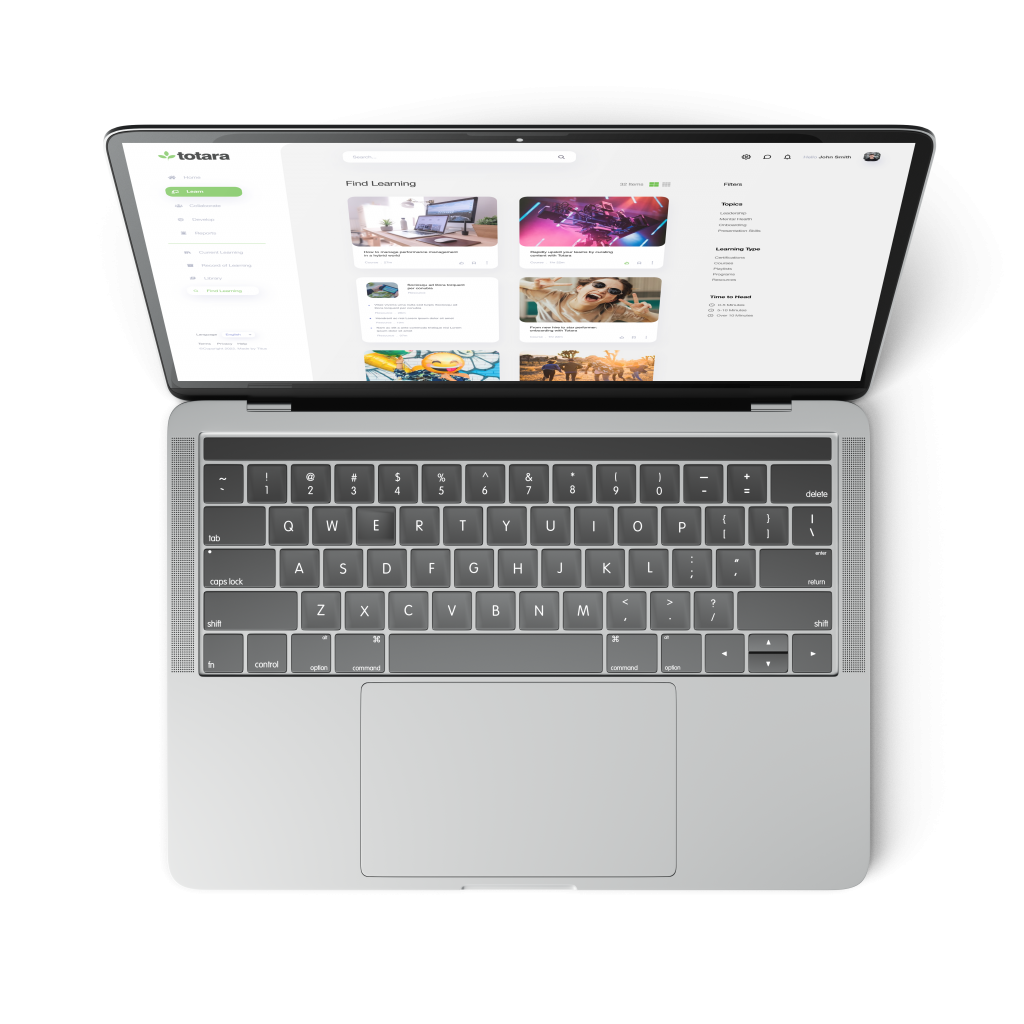SCORM is one of those terms that anyone working in e-learning or workplace L&D will have seen referenced a thousand times — usually in the context of content, standards or compatibility.
But what is it exactly, how does it work, and is it still relevant as we head into 2025? Find the answers here, as we take a deep dive into the meaning behind the acronym.
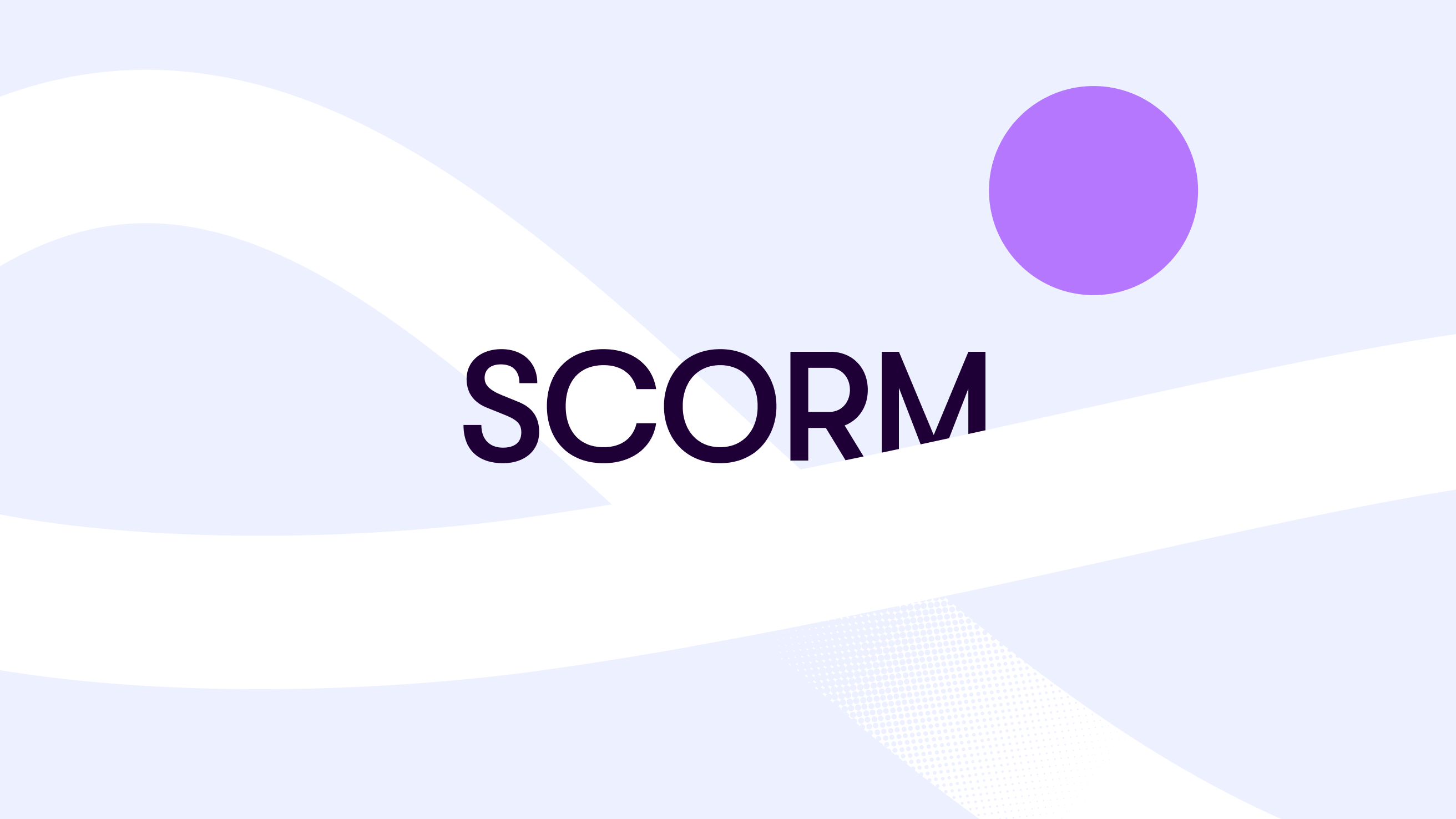
What is SCORM?
SCORM is a set of technical standards for e-learning content designed to be used in a learning management system or LMS. The SCORM standards ensure that learning materials (created using a variety of authoring tools) can be used in any compatible LMS and that key features such as grading and progress tracking will work correctly.
What does SCORM mean?
While these two types of software platforms share similar acronyms, they serve very different purposes.
Asset Management Systems (AMS) manage and track physical assets such as equipment and infrastructure for preventative maintenance, servicing, and inspections.
Learning Management Systems (LMS) focus on human assets — the employees — ensuring that they have the knowledge, skills, and resources to carry out their role effectively and engage in their own career development by accessing training and upskilling opportunities.
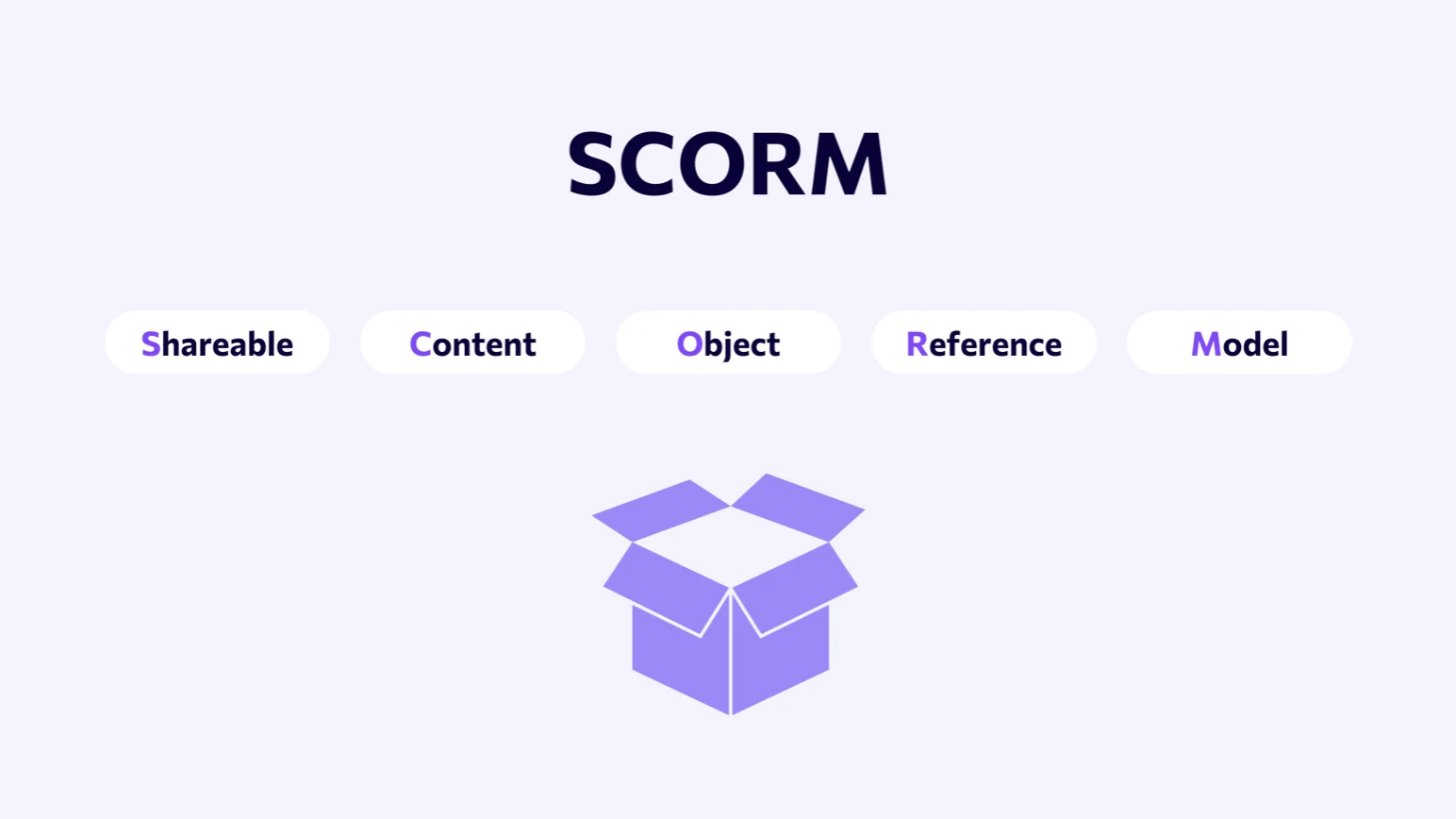
Sharable Content Object
In this context, a content object could be any learning resource — a video, a quiz or an interactive assessment — that together make up an online course. These objects are designed to be repurposable, allowing them to be combined in different ways across different courses, hence “shareable”.
Reference Model
The latter part of the acronym refers to the fact that SCORM isn’t a piece of software or a technology, it’s a reference model (or framework, or set of guidelines) which specifies how e-learning content should be formatted and structured to integrate seamlessly with a SCORM-compatible LMS.
Think of it like the USB standard — it’s not a product, it’s a guide for any manufacturer on how to create connectors (chargers, data cables, etc) which will be compatible with any phone that also meets the standard. In the same way, you can be confident that any SCORM-compliant content will work in a SCORM-compatible LMS.
How does SCORM work?

The SCORM standard governs two phases of e-learning content use:
1. Packaging (or content aggregation)
At the core of a SCORM package is a manifest file that explains to the LMS exactly how the package files are structured so that the learning content or course contained within can be properly launched, interpreted, and tracked.
2. Run-time communication (or data exchange)
SCORM also specifies how the content interacts with the LMS while it is in use — for example, correctly scoring assessments based on user input, storing grades, and recording when a course or module has been completed.
What are the main benefits of the SCORM format?
SCORM offers several key advantages for e-learning content development and delivery. These include broad compatibility, streamlined tracking, and cost efficiencies.

Compatibility with almost all LMS platforms.
The most obvious benefit of using a widely-adopted standard like SCORM is compatibility. Content publishers use SCORM to ensure their products are available to as wide an audience as possible, and work out-of-the-box without editing or reformatting.
Easy tracking of learner data (progress, completion, scores).
SCORM enables automated tracking of learner progress, completion status, and scores within the LMS. This eliminates manual tracking and provides valuable data for evaluating learning effectiveness and identifying areas for improvement.
Cost and time savings (reuse of content).
Creating e-learning content can require significant time and resources. The modular nature of SCORM lends itself to remixing and repurposing content into new formats, allowing L&D departments to get more value out of the elements they have created (or purchased).
Portability and scalability for businesses.
For content created in-house, adhering to SCORM standards makes commercial sense, as it means that if the business migrates to an alternative learning platform in future, courses and activities can be transferred to the new LMS painlessly.
What is tracked by a SCORM course?
A SCORM course can track a variety of data points which facilitate the management, analysis and reporting of learner progress, at an individual and group level, as well as providing invaluable context for effective automation of functions within the LMS.
Lesson location
Lesson location in SCORM can be thought of as a bookmark, recording the point in a given module that a learner reached during a session, and allowing them to start where they left off next time. It’s also useful for analysing where users may “drop out” of a particular module which helps with refining course design.
Lesson status
Lesson statuses recorded in SCORM include “passed”, “completed”, “failed”, “incomplete”, “browsed” and “not attempted”. This gives granular insight into how learners are engaging with the materials and their progress at any given moment.
Session time and total time
Session time refers to the time the learner has spent on a module or course since last logging in, and total time is the amount of time they have spent on it overall. These data points are useful metrics for evaluating engagement and difficulty levels.
Raw score
The raw score is the grade achieved by a learner in a SCORM module, for example, the number of questions correctly answered within a quiz. This datapoint syncs with the LMS gradebook and can be exported to other reporting tools.
Mastery score
The mastery score in SCORM can also be thought of as the “passing” score — it allows the creator of a learning module to set a minimum score in order to count as a pass. This is useful in reporting or in automated assignment of certificates or badges.
Interactions
SCORM allows for tracking of learner interactions with interactive elements within the course, such as clicking buttons, selecting answers, or completing drag-and-drop activities — providing insights into learner engagement and understanding of the material.
Sequencing and navigation
SCORM defines how learners navigate through the course, ensuring a consistent and structured learning experience. It supports features such as branching scenarios, pre-requisites, and adaptive learning paths based on learner performance.
SCORM vs other standards
xAPI (Tin Can API)
SCORM mainly tracks online learning within an LMS environment. In contrast, xAPI captures a broader range of learning experiences — including offline learning, simulations, games, real-world activities, and social learning interactions.
xAPI uses a more flexible data model, allowing it to track detailed information about learner activities and performance and providing richer insights into learning effectiveness. It also supports mobile learning and offline tracking, addressing the limitations of SCORM in supporting modern learning styles.
cmi5
cmi5 is a newer standard designed to address some of the shortcomings of SCORM while leveraging the advancements of xAPI — defining a standardised way to launch learning activities and communicate data back to the LMS, thereby making it easier to integrate xAPI content into existing learning ecosystems.
It provides a more streamlined approach to e-learning content delivery, offering improved security and mobile learning support compared to SCORM. cmi5 can be seen as a bridge between the established standards (SCORM) and the more flexible and versatile approach of xAPI.
H5P
H5P is an open-source tool for creating interactive HTML5 content — offering a user-friendly way to develop engaging, interactive learning experiences. It provides pre-built content types, such as quizzes, presentations, interactive videos, and games, making it easy to create modules without requiring programming knowledge.
While H5P itself doesn’t define communication with an LMS, it can be used in conjunction with SCORM or xAPI to track learner interactions within an LMS environment.
How to create SCORM-compliant courses: a step-by-step guide
1 - Choose an authoring tool
Some content creators hand-code SCORM objects using HTML or JavaScript. More common though is the use of authoring software which exports SCORM-compatible files for import into an LMS. You can choose from commercial options such as Articulate or Adobe Captivate, or opt for open-source tools such as eXe or Xerte.
2 - Plan your course content
Before starting the design process, carefully plan the content of your course. Define learning objectives, structure the modules, and select appropriate media and interactive elements to create an engaging and effective learning experience.
3 - Design your course in the authoring tool
Use your chosen authoring tool to design and develop the course content. Incorporate text, images, videos, quizzes, and other interactive elements to create a rich and engaging learning experience. Ensure that the design is consistent with SCORM guidelines.
4 - Export your course as a SCORM package
Once the course is complete, export it as a SCORM package. Most authoring tools have a built-in export function that creates a ZIP file containing all the necessary files and the manifest file, which describes the course structure and content to the LMS.
5 - Upload the SCORM package to your LMS
Log in to your LMS and navigate to the course management section. Upload the SCORM package to the LMS. The LMS will unpack the package and make the course available to learners.
6 - Test your SCORM course
Before releasing your new course to learners, it’s important to test it fully, as occasionally there may be errors in the encoding, export or import processes which mean certain functions don’t work as expected. Once you’ve checked that all’s well, you’re ready to publish.
Conclusion
SCORM isn’t the most advanced or up-to-date content standard out there, but it retains several advantages — widespread support from authoring software, compatibility with the vast majority of learning management systems and relative ease of use, including the availability of a range of open-source tools.
However, the other standards we mentioned all have their own strengths, and depending on your specific use case, you may find one of those alternatives more appropriate.
If you have any questions about e-learning content authoring, compatibility with different systems, or guidance on effective course design, we’d be happy to offer the benefit of our experience. Contact one of our e-learning consultants today to learn more.



